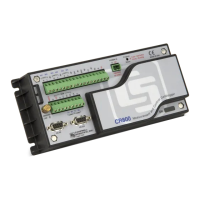Section 7. Installation
262
CRBasicExample60. PT100inThree‐wireHalf‐bridge
'See FIGURE. PT100 in Three-Wire Half-Bridge (p. 261) for wiring diagram.
Public Rs_Ro
Public Deg_C
BeginProg
Scan(1,Sec,0,0)
'BrHalf3W(Dest,Reps,Range1,SEChan,ExChan,MPE,Ex_mV,True,0,250,100.93,0)
BrHalf3W(Rs_Ro,1,mV25,1,Vx1,1,2200,True,0,250,100.93,0)
'PRTCalc(Destination,Reps,Source,PRTType,Mult,Offset)
PRTCalc(Deg_C,1,Rs_Ro,1,1.0,0)
NextScan
EndProg
7.8.18.2.4 PT100 in Four-Wire Full-Bridge
Example Shows:
• How to measure a PRT in a four-wire full-bridge
Advantages:
• Uses half as many input channels as four-wire half-bridge.
Example PRT Specifications:
• Alpha = 0.00392 (PRTType 2)
This example measures a 100 ohm PRT in a four-wire full-bridge, as shown in
figure PT100 in Four-Wire Full-Bridge
(p. 263), using CRBasic instruction
BRFull(). In this example, the PRT is in a constant-temperature bath and the
measurement is to be used as the input for a control algorithm.
As described in table Resistive Bridge Measurements with Voltage Excitation (p.
292
), the result of BRFull() is X,
X=1000V
S
/V
X
where,
V
S
=measuredbridge‐outputvoltage
V
X
=excitationvoltage
or,
X=1000(R
S
/(R
S
+R
1
)‐R
3
/(R
2
+R
3
)).
With reference to figure PT100 in Four-Wire Full-Bridge (
p. 263), the resistance of
the PRT (R
S
) is calculated as:
R
S
=R
1
X'/(1‐X')

